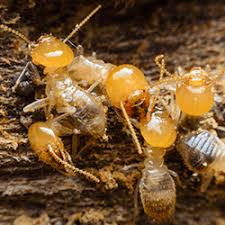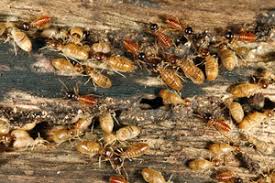Top Guidelines Of Termite Control Specialists
This webpage describes the three types of subterranean termite, drywood and dampwood, and the most common termite species that are found in infestations around Australia.
Termites are categorized into three categories according to their nesting and feeding habits: subterranean, drywood and dampwood.
Subterranean termites are the most frequent kind of termite that infests timber in buildings and are among the most damaging pests. Outdoors timber that is dead is mostly infested by them in contact with the soil, such as branches, stumps and fallen trees. They prefer wood which has some degree of rot already, which makes it a lot easier for them to digest it, although they can digest wood. .
Rumored Buzz on Termite Control Services In Adelaide
Subterranean termites will need to be to survive, where they can easily obtain moisture in the 30, making their nests in or close to the earth. They tunnel through dirt to access moist soil or wood and in seasons they float down deeper to reach moisture. .
The termites use dirt as a material to construct shelter tubes and nests, which can be composed of soil, wood, faeces and saliva. Some species build carton nests above ground and construct shelter tubes (also called sand tubes) to link the nest to the soil.
Foraging is determined by the weather, with higher activity in summer and minimal activity in conditions or chilly after rainfall. In areas they can forage all year round, with peaks during wetter conditions.
Facts About Termite Control Review Revealed
Drywood termites reside in small colonies less than 1000 people, wholly inside pieces of timber. There might be tiny colonies like a piece of furniture within a piece of timber or object. They can feed across rings so that the galleries don't adhere to the grain of wood as is subterranean termites, however they are inclined to steer clear of heartwood.

Colonies can grow for many years undetected until the timber breaks or the termites swarm. Before the population reaches a vital point the alates, which would be the exemptions that depart the nest, Find Out More might not be produced for years in a colony. They then leave the nest discover a site that is new in order to mate and begin a new colony, generally not far from the parent colony and to pair up. .
Decayed wood that remains moist due to contact with the soil or via a water leak in a construction is normally infested by termites. They are likely to infest timber that's outside stump or logs in contact.

Termite Control Review - Questions
Termites live wholly they feed on and create big galleries. As with termites, they may infest timber for many years before they're discovered, which is most likely when the alates swarm from a mature colony. Swarming may happen over several months, with different species swarming at different times.
They are an indication of a moisture problem if they are observed at a building. Removing the supply of moisture can are minor pests and controls in structures them. In trees they have a tendency to feed on rotting and dead wood.
Species can be difficult to recognize, even for the specialists. Identification is based on the soldiers, that's the termite caste which has the most distinguishable features.
Of the pest species listed above, it is.
Not known Incorrect Statements About Termite Control Review
The head of the soldier is rectangular pear-shaped and yellowish with darker, smooth thin mandibles. Body is up to 7 mm long. It's easily confused with two other native Coptotermes species, C. frenchi and C. lacteus (Victoria Museum)
The soldiers generate a white sticky liquid out of an opening (fontanelle) on the front of mind when defending the nest from assault.
Mounds are not typically built by coptotermes species, but in other areas of Australia and Queensland. They largely stumps, nests in trees, sticks, buried wood under buildings spaces, around houses and in walls. Favoured trees for nesting are various eucalypts, English oaks and peppercorns. The colony is found at the part of their trunk or the root crown.
7 Easy Facts About Termite Control Specialists Shown
Though Mastotermes darwiniensis is the locally across its limited range in Australia, coptotermes acinaciformis have become the most her comment is here destructive termite species in Australia overall. C. acinaciformis attacks all timber structures and obligations forest and ornamental trees as well as fruit trees.